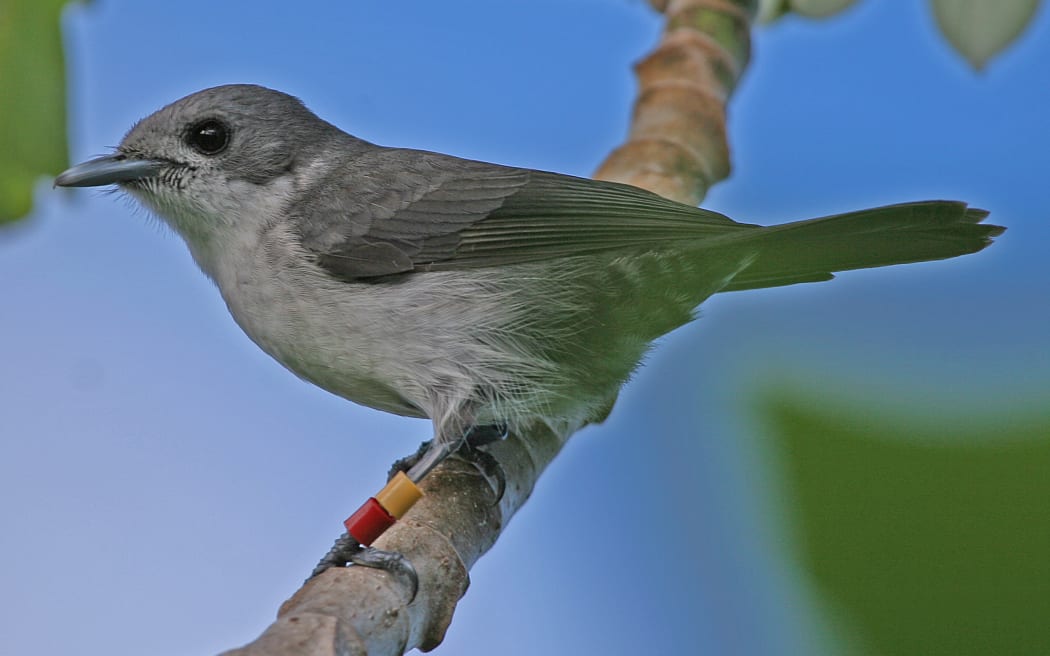Conservation successes in the Cook Islands
Saturday 10 December 2022 | Written by Supplied | Published in Environment, Local, National

An adult kakerori with typical grey pluamge. Photo: Marcus Lawson 22120903
The delightful little kākerōri, or Rarotonga flycatcher, has been brought back from the brink of extinction in a Cook Islands conservation success story.
In the mid-1980s New Zealand ecologist Rod Hay identified the critically endangered kākerōri as one of the Top Ten most at-risk birds in the Pacific. The population hit a low of just 29 birds in 1989, and Rod and fellow kiwi Hugh Robertson identified ship rats and feral cats as significant threats to the species’ survival. “Rats … are the number one problem for kākerōri,” says Hugh.
They started a rat control study, using poison baits to knock down rat numbers and Hugh says the results were impressive.
“We found that the breeding success [of the birds] was 62 percent in the areas where we’d been controlling rats, compared with 26 percent in the areas we hadn’t.”
Female kākerōri are particularly vulnerable to being predated as they spend most time on the nest.
“In the non-treatment area 34 percent of the females died each year, but in the treated area we reduced that down to just 8 percent dying each year,” says Hugh.
Kākerōri live in three forested valleys collectively known as the Takitumu Conservation Area, which lies in Rarotonga’s southeast. The TCA, as it is known locally, belongs to three land-owning families. Back in 1996, they set aside 155 hectares of forest to protect the kākerōri.
The rat control programme was extended across the Takitumu Conservation Area, and has been led since 1999 by Ian Karika. Ian, other landowners and a team of volunteers put out poison baits from September to December each year, to protect nesting birds. The bait is funded by income from guided walks into the sanctuary.
The kākerōri population has climbed steadily and on his recent trip to colour band individual birds and conduct a population census, Hugh and his colleagues estimated that the kākerōri population has reached at least 621 birds on Rarotonga.
“It beggars belief really that they could have done so well, from being just 29 birds 33 years ago,” says Hugh.
Hugh says the success of the kākerōri conservation programme on Rarotonga is due to the people who put out the rat poison.
“A lot of blood, sweat and tears has gone in from the rat poisoners over the years, but it’s certainly paid dividends.”
In the early 2000s, 40 kākerōri were translocated to the small southern island of Atiu to establish an insurance population. There are no ship rats on Atiu, and Hugh says there could now be anything from 150 to 500 birds on Atiu.
“The global population could now be a thousand birds,” says Hugh, “so quite a remarkable feat.”
He plans to carry out a census of kākerōri on Atiu in 2023, with funding support from Auckland Zoo.
Alison Ballance, RNZ














































